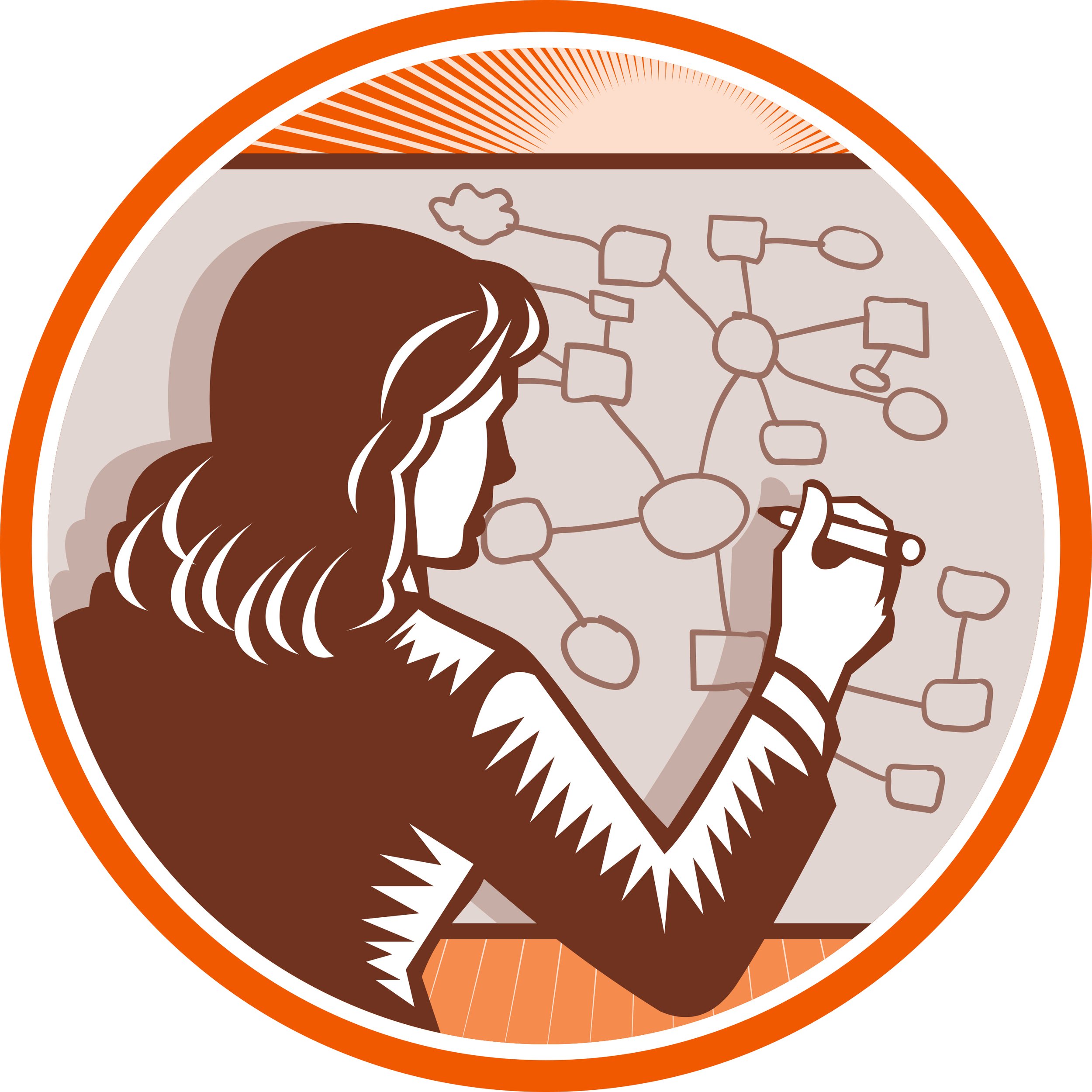Read with asl - design
Chris Wixtrom, Producer, Read with ASL YouTube channel
Deaf English language learners who have not had the opportunity to hear and acquire English in a fully auditory, effortless way through everyday listening experiences do not have rich access to the language they are reading. They do not have a repository of familiar English listening experiences to apply to the reading. Instead, reading must be freshly discovered through print. Teachers of the deaf need to make that discovery process interesting.
I design Read with ASL videos to facilitate print comprehension by pairing text with abundant visual context. The real-life clips provide conceptual viewing experiences. These are followed by American Sign Language clip descriptions. On-screen words or sentences are reading comprehension opportunities, not ASL translations. The scenes, ASL descriptions, and reading-comprehension opportunities complement each other and intertwine, giving viewers a dual-language acquisition experience, not a lesson.
Communication with deaf readers must prioritize conceptual accuracy
A mistake often made in teaching deaf learners is setting individual word-to-sign connections that do not accurately reflect the meaning of a word as it appears in multiple contexts. For example, someone may teach that the word “run” means the sign which indicates physically running. This inaccurate single-sign association then interferes with understanding the other 600+ meanings of “run” in English. If a deaf reader has no information about the fact that a word has multiple meanings, the fixed word-to-sign link will interfere with comprehension. Eventually, after many unclear English-influenced and inaccurate signing experiences accumulate, the brain simply tires of trying to make sense of the mishmash. When signed text translations don’t fit the meaning of the text, the mind dismisses the entire reading effort. This goes beyond affecting how learners feel about reading. Of course, when reading is confusing, it isn’t interesting. But the most dangerous aspect of inaccurate “translation” is that the deaf reader may be unaware that he is not actually “reading” the text at all. He can become so used to mangled language connections that he doesn’t realize that meaning has been entirely lost.
Loose word strings vs. a woven perceptual network
I’ve found that one of the most effective ways of breaking through this mental morass is by giving learners broad language exposure to multiple-meaning words representing various concepts in prepared reading experiences. The reader’s mind can welcome and embrace multiple meanings of single English words in these different contexts.
Years ago, I was looking through a box of books at a yard sale, and I came across one with simple drawings illustrating multiple-meaning word sentences. I immediately realized that this would be an outstanding resource for teaching reading to deaf children. It turned out that this is exactly why the My Life Pictionary: multiple meanings book was originally created in 1974. It was specifically designed to help deaf children with reading comprehension. Though the drawings and some of the sentences were dated, I knew immediately that this resource was a diamond in the rough. The Pictionary could be used to train the mind to "picture" meaning, instead of struggling to find sign-for-word translations. The book’s presentation of multiple-meaning words is a deceptively simple, yet highly effective reading comprehension enhancement. I have taken inspiration from this book and applied it to the fully realized dual-language experiences represented by the Read with ASL YouTube channel multiple-meaning word videos.
Passive listening vs. Active watching
Listening is a mostly passive physical and cognitive experience. Hearing babies and children can pick up spoken language without effort and even without focused attention. The vast automatic auditory absorption of plentiful spoken language sources contrasts starkly with the limited amount of sign language available to deaf children in some settings and the fact that visual and cognitive effort must be focused to perceive sign language. Because understanding sign language only comes with focused attention, the first step for helping babies and toddlers make sense of visual language must be to encourage the shifting of eye gaze back-and-forth from objects and scenes to signers. For sign to be seen and understood, attention must be paid.
Open-source language vs. Lean pickings
For listeners with full auditory perception, the whole world is an oyster, offering countless pearls of contextual spoken language. However, in general, there are fewer opportunities to observe and absorb contextual sign language compared to the boundless opportunities for a hearing child to access speech. Despite this, research indicates that even basic signing from non-native signers within families makes a big difference in deaf children’s sign language acquisition. Providing access to visual language and connecting this sign language with reading is vital.
“The store is open.” vs. “There is no store.”
When hearing persons who already know English are learning to read, they draw directly from a familiar and abundant store of language and can learn to match the sounds of that language to the reading process. In contrast, deaf learners who have never had effortless access to English do not have that inner cache of English language experiences.
Teachers of the deaf must encourage active print exploration
To foster English language development and reading comprehension, teachers of the deaf have a responsibility to creatively bring meaningful print experiences to the eye, and to make these experiences worth the attention of deaf learners.
Chris Wixtrom
M.S. Education: TESOL (Teaching English to Speakers of Other Languages)
Producer, Read with ASL YouTube channel (related website: englishbyeye.org)
Founder, ASL Access, volunteer-based nonprofit organization (aslaccess.org)
FREE RESOURCES
These free Pictionaries build reading comprehension and help with conceptually-accurate ASL signing. Originally designed to help deaf children with reading and published in 1974, the books have simple drawings illustrating sentences. The multiple-meaning words book & verbs book are available free here: https://englishbyeye.org/multiple-meaning-pictionaries
Read with ASL YouTube channel: A dual-language acquisition resource
https://www.youtube.com/channel/UCjEcrVFcbHhr0-codvYGV9w/videos
Multiple-meaning word video direct links: https://englishbyeye.org/multiple-meaning-word-links
Multiple-meaning word sentences from Read with ASL videos: https://englishbyeye.org/multiple-meaning-word-sentences
Links to ASL resources are found here: The ASL Access website provides resources for ASL instruction, families of deaf children, and much more.
Articles about ASL, Deaf Education and related topics are found here: ASL Access articles
FEE-BASED TUTORING (This tutoring is not free.)
Reading tutoring: Online one-on-one tutoring in reading comprehension and vocabulary growth, using ASL to communicate. (This is not ASL instruction. It is reading comprehension tutoring.) Deaf/HH students need to know ASL to fully communicate with the instructor. The instructor is a hearing person with over 40 years of teaching experience, including 14 years working one-on-one with Deaf adults. Instructor: Chris Wixtrom, M.S. Education: TESOL (Teaching English to Speakers of Other Languages), Producer, Read with ASL YouTube channel and websites: englishbyeye.org and aslaccess.org. 1997 Founder, ASL Access. For more information, contact: chrisgivesclarity@gmail.com. Some Vocational Rehabilitation agencies cover this tutoring, as it rapidly develops English literacy helpful to vocational goals.



